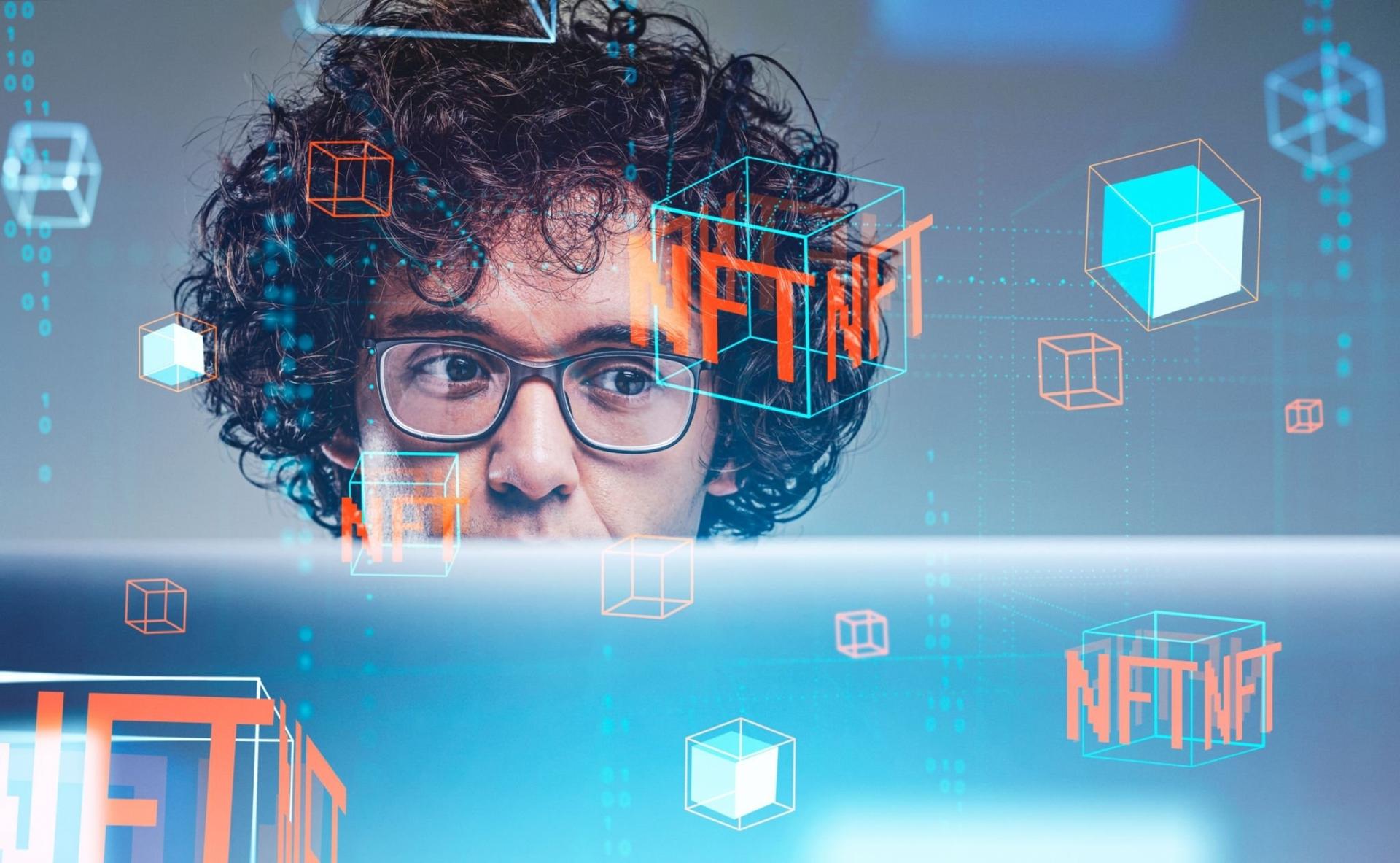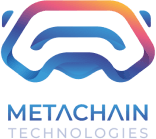
Discover how to create an NFT marketplace and cash in on the booming trend.
Crafting Your Own Thriving NFT Marketplace - A Step-by-Step Blueprint
Introduction
We're currently living in an age of digital revolution where virtually anything can be tokenized and traded as Non-Fungible Tokens (NFTs). These unique digital assets are commanding staggering prices, with some even fetching millions, and in rare cases, hundreds of millions of dollars.
Case in point: the inaugural tweet was sold for a mind-boggling $2.9 million, and a collection of NFTs named "The Merge" drew in a record-breaking $91.8 million. This swift upsurge in the popularity and use of NFTs is reshaping the way we trade commodities, and in some ways, nudging traditional cryptocurrencies into the shadows. Through this article, we'll take you through the process of setting up your very own NFT marketplace and explore the reasons behind its potential profitability. We'll delve into the nuts and bolts of constructing an NFT marketplace, including its inner workings, a systematic guide to building one, and a comprehensive breakdown of the associated costs.
Let's embark on this journey to understand this lucrative opportunity.
What is an NFT/NFT Marketplace?
Non-Fungible Tokens (NFTs) are singular, inimitable cryptographic tokens that exist on a blockchain network. Contrary to cryptocurrencies, each NFT possesses its unique value derived from its individual traits and attributes, rendering it non-interchangeable. NFTs have the capacity to represent a myriad of real-world assets such as artworks, real estate, collectibles, and even memorable moments. NFT marketplaces are digital arenas that facilitate the buying and selling of NFTs. These marketplaces fall under two main categories: general marketplaces that handle a variety of NFTs, and niche marketplaces that specialize in specific types of NFTs and cater to a distinct audience. Our comprehensive guide to navigating NFT marketplaces will equip you with the requisite knowledge to thrive in this dynamic industry. This manual will encapsulate everything from the perks of NFTs and their marketplaces to the strategies for managing them effectively. Whether you are an artist, a collector, or an inquisitive enthusiast, stay tuned as we unravel the ins and outs of NFT marketplaces.
Why is 2023 the Ideal Year to Launch an NFT Marketplace?
In the recent past, we've witnessed an exponential surge in the popularity of NFT marketplaces, which is primarily driven by the explosive expansion of the NFT market itself. In mid-2022, the global NFT market was projected to have a valuation around the $3 billion mark, showing a formidable 30-fold growth from just a couple of years earlier when the market stood at a humble $100 million (BeInCrypto, 2022). This phenomenal growth trend has persisted into 2023, with the NFT sales projected to be roughly $2.5 billion on a monthly basis (DappRadar, 2023).
Highlighting the significant sums involved, "The Merge" is one of the most expensive NFTs that sold for over $91 million. This was closely followed by "The First 5000 Days" by artist Beeple, which fetched an astounding $69 million back in March 2021 (NBCNEWS, 2021). In November 2021, the Board Ape Yacht Club NFT collection, featuring 10,000 distinct cartoon apes, was sold out in less than an hour, generating upwards of $24 million in sales (Forbes, 2021).
One of the leading NFT marketplaces, OpenSea, is presently valued at $13.3 billion, placing it in the coveted decacorn club (CoinMarketCap, 2022).
Given the sustained growth trajectory and immense potential of the NFT market, launching an NFT marketplace in 2023 could open up a highly profitable business venture. Regardless of whether you target a niche demographic or a wider audience, providing a platform for the trade of NFTs could unlock significant revenue streams.

Understanding the Mechanics of NFT Marketplaces: A Technical Perspective
NFT marketplaces serve as digital arenas where individuals can present their digitally signed assets, designate a starting price, and potentially rake in millions by selling their artistic creations or valuable items. The modus operandi for most NFT marketplaces is largely uniform and involves the following sequential steps:
- Registration: Users are first required to register an account and connect a supported digital wallet, which will function as their storage and management hub for their NFTs.
- Acquisition of NFTs: Prospective buyers can either acquire NFTs at a fixed price or engage in an auction. Certain marketplaces also facilitate direct interaction between customers and sellers, where offers can be made and, potentially, prices can be negotiated.
- Sale of NFTs: Users have the liberty to resell NFTs they have purchased or created, encompassing signed photographs, music, and art pieces. Users intending to sell their NFTs must list them on a marketplace and can then choose to sell them at a fixed price or via an auction. If the asset clears the platform's scrutiny measures, it will be listed for purchase. Upon receiving and accepting a bid, the marketplace automatically transfers funds from the buyer's account to the seller's account to facilitate the purchase of the NFT.
On the whole, NFT marketplaces are fairly straightforward yet potent platforms that enable artists, collectors, and enthusiasts to trade unique digital assets. With the meteoric growth of the NFT market, comprehending the technical nuances of these marketplaces becomes crucial for anyone seeking to enter this vibrant and burgeoning field.
How NFT Marketplaces Function: A Technical Overview
NFT marketplaces are virtual platforms that allow individuals to submit their digitally signed assets, select a starting price, and possibly make millions by selling their artwork or valuables. The procedure for most NFT marketplaces is similar and involves the following steps:
Signing up
Users must first create an account and link a supported digital wallet where they can store and manage their NFTs before they can use an NFT marketplace.
Buying an NFT
Interested parties can either pay a fixed price for NFTs or bid on them in an auction. In certain markets, customers may make direct contact with vendors, make an offer, and possibly negotiate a lower price.
Selling an NFT
Users may resell both NFTs they have acquired and NFTs they have created, including signed photos, music, and artwork.Users who wish to sell their NFTs must first create a listing for them on a marketplace, at which point they can decide whether to sell them at a fixed price or conduct an auction. If the asset passes the platform's checks and balances, it will be made available for purchase. When a seller receives and accepts a bid, the marketplace will automatically move money from the buyer's account to the seller's account in order to cover the NFT.
Overall, NFT marketplaces are a relatively simple but powerful tool for artists, collectors, and enthusiasts to buy and sell unique digital assets. With the rapid expansion of the NFT market, understanding the technical aspects of these marketplaces is critical for anyone looking to participate in this exciting and rapidly growing space.
Crafting an NFT Marketplace: A Step-by-Step Blueprint
Constructing an NFT marketplace entails a multitude of decisions and processes. Typically, these platforms are erected following a ten-step blueprint:
- Carving out a Niche
- Partnering with a Developer for Building the NFT Marketplace
- Deciding on the Feature Set
- Selecting a Monetization Strategy for the Marketplace Development
- Crafting the UX/UI Design
- Selecting the Technology Stack
- Kickstarting the Marketplace Development
- Testing and Deployment
- Promotion and Gathering Feedback
- Planning for Continuous Development and Support
Each of these steps involved in the creation of an NFT marketplace will be examined in-depth in the subsequent sections.
Step 1: Carving Out a Niche
The initial step in the creation of an NFT marketplace involves determining the kind of marketplace you aspire to build. The possibilities are manifold: you could create an art-centric NFT marketplace, a gaming-focused NFT marketplace, a sports-themed NFT marketplace, or even carve out your own unique NFT niche. Let's delve into some of these categories:
Art NFT marketplaces
Art NFT marketplaces serve as platforms for individuals to buy and sell NFTs representative of various works of art. These usually come in two types: non-curated and curated art NFT marketplaces. Non-curated marketplaces do not exercise control over the quality or diversity of the art presented. Conversely, curated or invite-only marketplaces maintain a stringent standard about who can participate and what can be sold. SuperRare, for example, is a curated marketplace that exclusively accepts submissions from recognized artists.
Gaming NFT marketplaces
NFT marketplaces within the gaming sphere are often embedded within the games themselves. They provide a secure and trustworthy avenue for users to purchase and trade NFTs representing in-game items and characters. The incorporation of NFTs within games endows players with a greater sense of ownership and investment opportunities. The increasing recognition of NFTs promises enhanced future integrations between NFT marketplaces and the gaming world.
Sports NFT marketplaces
These facilitate the trading of NFTs within the sports industry, which could encompass digital trading cards of notable athletes or NFTs capturing iconic moments in sports history.
Mass NFT Marketplaces
These marketplaces enable the trading of diverse digital assets, including art, memes, music, videos, gaming items, and collectibles. They are not confined to a single category or classification.
Innovative NFT Marketplaces
This includes more inventive ideas, like eLearning NFT marketplaces that sell online courses or curated educational programs, investment NFT marketplaces acting as stock markets for legally valid assets, or security NFT marketplaces that utilize non-fungible tokens to grant access to software, databases, content, or events. Real estate NFT marketplaces allow users to tokenize real-world properties and sell them as NFTs, effectively transferring ownership rights to the buyer. Another idea is a marketplace for the trading of digital goods like virtual land or properties, as seen in Decentraland.
The scope of NFT marketplaces that can be created is boundless. You have the freedom to either follow one of the aforementioned ideas or pioneer your own innovative solution. Before proceeding, consider the following questions:
- Will you utilize a white-label NFT solution or build an NFT platform from scratch?
- How will your NFT marketplace distinguish itself from competitors?
- Which NFT standards should the marketplace adhere to?
- How will customers pay for NFTs?
- Will your NFT marketplace facilitate NFT minting?
Step 2: Engaging an NFT Marketplace Development Firm
Building an NFT marketplace necessitates a profound understanding of various technological realms, encompassing blockchain development, smart contract creation, user experience design, among others. If you don't possess the requisite technical prowess to build an NFT marketplace, engaging a development firm to take care of the technical aspects of the project is a feasible course of action.
Here are some options for procuring developers for your NFT marketplace:
Freelancers:
If your requirement is just a few hours of work, engaging freelancers could be a viable choice. However, building an NFT marketplace demands the synergistic efforts of a professional team, which may be challenging to assemble solely via freelancers.
In-house Developers:
Hiring in-house developers for your NFT marketplace can pose its own set of difficulties, as locating and acquiring the right skillsets might be an arduous task. Additionally, you may need to engage multiple specialists from different technical fields, which could inflate costs.
NFT Marketplace Development Company:
Arguably, the most efficacious strategy might be to engage an NFT marketplace development company, delegating the technical execution to them while you concentrate on managing the business. By outsourcing, you'll avail yourself of top-tier developers worldwide and sidestep the complexities of handling a large team.When embarking on the search for an NFT marketplace development company, it's prudent to compare offerings from reputed firms in the market. After whittling down your options to a manageable few, set up conference calls to discuss your project and the firms' credentials.These conversations will allow you to assess their technical acumen, determine their fit with your team, and gauge their communication efficacy. To gain further insights into their operations, reach out to current and former clients and solicit their feedback.
White-label NFT Marketplace:
These ready-made digital trading platforms enable artists, collectors, and traders to circumvent the high costs and extended implementation cycles that come with building their own NFT marketplace. Yet, they do not compromise on the platform's customizability to unique needs. Having pre-built features like user authentication, payment gateways, and smart contract integration makes it significantly easier for entrepreneurs to operate an NFT marketplace and ensure a seamless customer experience.When embarking on the search for an NFT marketplace development company, it's prudent to compare offerings from reputed firms in the market. After whittling down your options to a manageable few, set up conference calls to discuss your project and the firms' credentials.These conversations will allow you to assess their technical acumen, determine their fit with your team, and gauge their communication efficacy. To gain further insights into their operations, reach out to current and former clients and solicit their feedback.
Step 3: Deciding on the Feature Set
As you transition to the next stage, you're faced with the exciting task of determining your NFT marketplace's feature set. To differentiate from your competitors, your marketplace should offer both essential and desirable features. Here are some features common to NFT marketplaces you may want to consider when designing your own platform:
• Essential Features:
User Authentication: Implementing a secure user sign-up and sign-in system is crucial. It's the first point of user interaction with your marketplace and the start of the user experience.User Profiles: Allow users to display information about themselves, their NFT collections, and their transaction history.Settings: Give users the ability to manage their profiles, preferences, and privacy settings, in addition to notifications to keep them updated about their transactions, bids, and other relevant activities.
• Storefront:
NFT Display: A visually appealing and user-friendly interface to display listed NFTs is a must-have. Include high-quality images, detailed descriptions, and other relevant information.
• Token Search:
The search mechanism is critical in an NFT marketplace, and it should include options to filter results. Consider incorporating advanced features like typo-tolerance, predictive search, voice search, and AI-powered personalized search.
• Categories and Filters:
With your marketplace potentially housing thousands or even millions of NFTs, a system that allows users to effortlessly find what they're looking for is essential. This can be achieved through categories and filters such as status, price, quantity, currency, and creation and expiration dates.
• Bid & Buy:
A marketplace's main function is to facilitate transactions. Adding a bidding feature can bring an element of competition to your NFT marketplace, where sellers can opt to sell to the highest bidder. It's also beneficial to include a closing date for bids, giving buyers a clear timeline.
• Listing Creation:
Users should be able to create their own NFTs and list them for sale. This feature includes providing a full product description, title, tags, and other details.
• Wallet Integration:
The wallet feature allows users to store, send, and receive NFTs and cryptocurrency. You can either create your own digital wallet or integrate your marketplace with an existing one.
• Ratings and Reviews:
Allow buyers and sellers to leave ratings and reviews based on their interactions. Reviews can help users assess the reliability of sellers and make more informed purchases.
• NFT Minting
Most NFT platforms allow users to mint NFTs, giving them the ability to add an NFT to the platform and list it on the blockchain for sale.
Beyond these features, you can also consider implementing advanced functionalities like an AI-powered content management system to prevent the upload of inappropriate content, P2P NFT trading, favorites lists, personalized recommendations, and much more.
Step 4: Choose an NFT Marketplace Monetization Strategy
NFT marketplaces have various options to monetize their platforms. These strategies are designed to generate income for the marketplace while still providing a smooth user experience. Here are some common monetization strategies for NFT marketplaces:
- Listing Fees: Under this strategy, sellers are charged a fee to list their digital assets on the marketplace. The cost could be one-time or recurring, depending on the duration of the listing.
- Transaction Fees: Another way for NFT marketplaces to generate revenue is by charging a percentage fee on each transaction conducted on the platform. This could range from a small percentage to a fixed charge per transaction.
- Setup Fees: Some NFT marketplaces charge creators a fee to list their first non-fungible token on the platform. This could be an effective way to generate revenue while also encouraging creators to utilize the platform.
- Bidding Charges: A bidding charge is a fee levied on bidders each time they place a bid on an NFT. This strategy is common in auction-based marketplaces.
- Advertising: Finally, NFT marketplaces can monetize their platforms by allowing users to pay to promote their NFTs. In addition, the marketplace could permit third-party companies to advertise on the platform for a fee.
Using these monetization strategies, NFT marketplaces can generate income while still delivering value to their users. It's critical to choose a strategy that aligns with the platform's objectives and caters to the needs of your target audience.
Step 5: Develop a UX/UI Design
Creating an NFT marketplace requires thoughtful attention to user experience (UX) and user interface (UI) design. The UX design plays a critical role in ensuring that users can navigate through the screens effortlessly. It is important to make sure that all users, irrespective of their technical proficiency, understand the logic behind each action. On the other hand, the UI design supports the operation of the platform. The design should be engaging and visually appealing to attract users to the marketplace.
The first impression of the marketplace is crucial for its success. Therefore, before embarking on the design work, it's important to research the target audience, their needs, and their expectations. Creating an NFT marketplace design that aligns with user expectations and delivers a seamless user experience will enhance the reputation of the platform, attract more users, and increase its chances of success.
Step 6: Determine the Technology Stack
Developing an NFT marketplace requires both back-end and front-end development. Different stages of building a fully functional platform require different technology stacks. The backend and frontend development of an NFT marketplace can make use of the following technologies.
Back-end Development:
The server-side component of the NFT marketplace, the backend, manages the platform's interaction with the database. The backend of NFT marketplaces can be developed using languages such as Java, PHP, or Python and frameworks like Symfony, Flask, or Spring. Choose from SQL databases like MySQL or PostgreSQL, or NoSQL options like MongoDB. Cache technologies like Redis or Memcached, along with search engines like Elasticsearch or Apache Solr, can be used to improve performance. For blockchain integration, options include Ethereum, Binance Smart Chain, Flow, Cardano, Tezos, and Solana along with their respective token standards. Smart contracts can be coded using the Ethereum Virtual Machine or the BSC Virtual Machine.
Front-end Development:
Front-end development involves creating the user interface of an NFT marketplace, which includes everything necessary for users to view the content and interact with the platform. To develop the front-end of an NFT marketplace, programming languages such as Angular.JS, React.JS, or Backbone can be used for web development, Java or Kotlin for Android, and Swift or Objective-C for iOS development. For integrated development environments (IDEs), you can use Android Studio for Android and Xcode for iOS. Software Development Kits (SDKs) like the Android SDK and iOS SDK are also necessary for mobile development.
The technology stack for backend and front-end development depends on the platforms you plan to target and the features you want to implement. Choose the appropriate technology stack to ensure your NFT marketplace functions optimally.
Step 7: Testing and Deployment
Ensuring that an NFT marketplace is reliable and secure necessitates comprehensive testing. This allows you to detect and correct any issues before your marketplace is launched.
The testing process should encompass the following stages:
- Unit Testing: This involves evaluating each component of the platform independently to ascertain it functions as anticipated.
- Integration Testing: These tests how various components of the system interact with one another, identifying potential issues that might occur from these interactions.
- Performance Testing: This tests the system's performance and scalability under different scenarios, such as high traffic volumes or peak loads.
- Security Testing: This tests the security of the platform, including its ability to withstand hacking attempts and other forms of cyberattacks.
Following thorough testing of the NFT marketplace and rectification of any remaining bugs, it is ready to be launched to the public. When a system is deployed, it is prepared for use in a production environment and made accessible to end users. To avoid downtime or interruptions, it is crucial to ensure a smooth and error-free deployment process. Once the marketplace is live, it should be closely monitored to ensure it continues to be stable, secure, and reliable.
Step 8: Promote and Gather Feedback
After launching your NFT marketplace, the focus should shift towards promoting the platform and gathering feedback from users. Effective marketing may start long before the actual launch of the product. You can spread the word about your marketplace by partnering with influencers, posting updates on social media, and encouraging your target audience to become beta testers.
Your marketing strategy should be comprehensive, possibly including a combination of paid advertisements, influencer marketing, partnerships, and social media marketing (SMM).
Once your marketplace is live, user feedback becomes an invaluable resource. Users can provide insights on what they like about your platform, what they think is lacking, and how they believe the overall user experience could be improved. This information can be utilized to fine-tune your NFT marketplace, making it more successful in the long run. Remember that constant iteration based on user feedback is a vital part of growing any online platform.
Step 9: Plan for Ongoing Development and Support
To ensure that your NFT marketplace remains competitive and successful, you should consider ongoing development and support. Here are some key considerations:
- Keep track of user reviews: Understanding what users like and dislike about your platform provides insights on areas to focus on for improvement.
- Monitor platform performance: Regularly assess your platform's efficiency and scalability, and make necessary adjustments to ensure optimal operation.
- Stay updated: Keep yourself informed about trends and new technologies in your industry. This will help you stay ahead of the competition.
- Develop a roadmap: Plan for future updates and enhancements, keeping in mind the long-term goals and vision of your platform.
- Regular Maintenance and support: Frequent maintenance and technical support prevent major issues from occurring and keep the platform running smoothly.
Maintaining an active NFT marketplace that caters to its users and other stakeholders requires continuous attention and investment.
Cost of NFT Marketplace Development
The cost of developing an NFT marketplace varies greatly, depending on several factors:
- The specific development company you choose
- The requirements and scope of your project
- The cost of UI/UX design and creation of branding elements such as logos, icons, and animations
- The technology stack used for development
- The complexity of third-party integrations
- The functionality and its complexity
It's important to get a detailed project estimation from your chosen NFT marketplace development company. For a detailed project estimate and a better understanding of the cost involved in developing your NFT marketplace, feel free to contact the development firm you are considering for your project.

In conclusion, developing a successful Non-Fungible Token (NFT) marketplace involves a strategic process, starting with identifying the perfect niche in the burgeoning NFT ecosystem to leveraging the skills of a proficient NFT marketplace development company.
Each step plays a pivotal role in determining the success of your blockchain-powered digital asset marketplace.
Your NFT marketplace must encompass both essential and unique features to stand apart in the crowded NFT space.
Effective monetization strategies like listing fees, transaction fees, setup fees, bidding charges, and ads can significantly bolster the platform's revenue.
User Experience (UX) and User Interface (UI) design hold immense importance in driving user engagement.
Carefully chosen technology stack for backend and frontend development further ensures a robust and efficient platform, well-equipped to handle transactions of digital assets.
Before your NFT platform goes live, rigorous testing stages, such as unit testing, integration testing, performance testing, and security testing, are indispensable to ensure a bug-free and secure marketplace for trading digital assets.
Once launched, your focus should shift towards marketing, gathering user feedback, and planning for ongoing development and support.
Remember, in the rapidly evolving world of NFTs, it is vital to stay updated with the latest trends and technologies and continuously enhance the platform to meet the evolving needs of users and creators.
Embark on this NFT marketplace development journey with careful planning and strategic execution, and you could find yourself at the forefront of the NFT revolution.
Good luck with your NFT marketplace development!

Matthew Connelly
Heralding over two decades of experience, Matthew Connelly, our dynamic CEO.References
- 1) Buterin, V., et al. (2015).Ethereum White Paper. Ethereum.
- 2) Entriken, W., Shirley, D., Evans, J., Sachs, N. (2018).ERC-721 Non-Fungible Token Standard. Ethereum Foundation.
- 3) DappRadar (2021).DappRadar NFT Marketplaces Ranking. DappRadar.
- 4) Ethereum.org (2021).Ethereum Introduction. Ethereum.
- 5) BusinessofApps (2021). Best Mobile App Development Companies (2021).BusinessofApps.
- 6) Brinkman, B. (2020). How to Monetize an App: Strategies and Examples.Toptal.
- 7) Morley, S. (2021). A beginners guide to testing Ethereum smart contracts.Medium.




